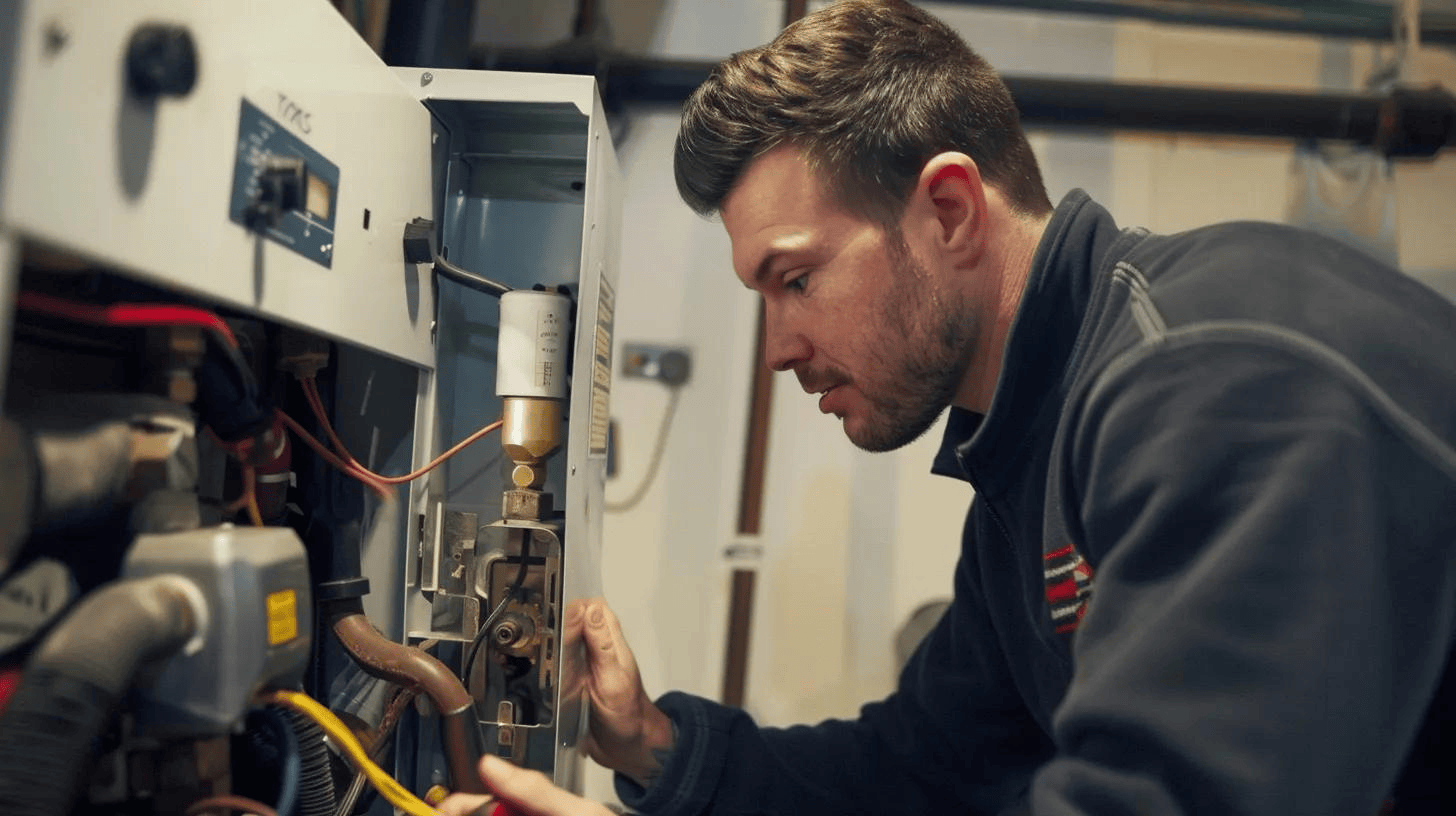IAQ Whole Home Humidifiers in North West Washington, DC
Whole-Home Humidifiers in North West Washington, DC
Combat dry winter air challenges in North West Washington, DC with a whole-home humidifier. Low humidity causes dry skin, respiratory issues, home damage, and increased energy bills. Our systems restore ideal moisture, protecting your family’s health and home. We provide various types—bypass, fan-powered, and steam—to suit your needs. Professional installation and regular maintenance ensure efficient, consistent, and healthy indoor air quality throughout your home.

Whole-Home Humidifiers for Your North West Washington, DC Residence
The distinct seasons in North West Washington, DC, bring unique challenges to maintaining a comfortable and healthy indoor environment. While we focus on heating during the frigid winter months, we often overlook a critical element of indoor air quality: humidity. Dry winter air, a common consequence of running a furnace, can significantly impact your family’s health, your home’s structural integrity, and your energy bills. A whole-home humidifier, seamlessly integrated with your existing HVAC system, is the definitive solution for restoring balanced moisture to your entire house, ensuring optimal comfort from room to room.
The Hidden Costs of Dry Indoor Air
When the relative humidity in your home drops below the ideal range of 30-50%, the effects can be pervasive. You might notice the symptoms before you identify the cause.
- Health and Comfort Issues: Dry air acts like a sponge, drawing moisture from every available source, including your body. This leads to dry, itchy skin, chapped lips, and irritated nasal passages and throats. For allergy and asthma sufferers, dry airways can exacerbate symptoms. It can also increase susceptibility to colds, the flu, and other respiratory infections, as viruses thrive in low-humidity environments.
- Damage to Your Home and Furnishings: Your house also suffers. Hardwood floors, wooden furniture, cabinetry, and musical instruments can shrink, warp, and crack as they lose moisture. Plaster and paint may chip, and wallpaper can begin to peel at the seams.
- Increased Static Electricity: Annoying static shocks when you touch a doorknob or another person are a hallmark of dry indoor air. This static buildup can also pose a risk to sensitive electronic equipment.
- Reduced Energy Efficiency: Air that lacks moisture feels colder than humidified air at the same temperature. This often causes homeowners to turn up the thermostat to feel warm, leading to higher heating costs and unnecessary strain on your furnace.
The Solution: Perfectly Balanced Humidity
By installing a whole-home humidifier, you introduce controlled, beneficial moisture into your air. This system works in tandem with your furnace or air handler to distribute humidified air through your ductwork, providing consistent benefits throughout your entire living space. You can expect to see significant improvements in every aspect of your indoor life. Enjoy healthier skin, easier breathing, and a more comfortable living environment. You will also be protecting your valuable investments, from wood floors to family heirlooms, and potentially lowering your winter energy consumption.
Choosing the Right Type of Whole-Home Humidifier
There are several types of whole-home humidifiers, each with its own method of operation and best-fit application. Understanding these differences is key to selecting the right model for your North West Washington, DC home.
Bypass Humidifiers
Bypass units are a popular and effective choice for many homes. They are installed on either the supply or return plenum of your furnace and use the warm air from the blower motor to evaporate water from a water panel. This humidified air is then circulated throughout the home.
- Advantages: These systems are typically the most affordable option, operate quietly, and have lower maintenance requirements.
- Considerations: They rely on the furnace blower to run and are slightly less efficient at producing humidity compared to other types. They require a nearby floor drain for excess water.
Fan-Powered Humidifiers
Similar to bypass models, fan-powered humidifiers also use a water panel. The key difference is that they include their own internal fan to blow air across the panel. This allows them to produce more humidity and operate independently of the furnace’s blower cycle.
- Advantages: They generate a higher humidity output than bypass models and are suitable for larger homes. Their self-contained fan allows for more flexible operation.
- Considerations: The internal fan adds a mechanical component that produces some noise and consumes more electricity than a bypass unit.
Steam Humidifiers
For the most precise and powerful humidity control, steam humidifiers are the premier choice. These units boil water internally to create steam, which is then injected directly into the ductwork. Because they generate their own heat, they can operate completely independently of the heating system and deliver the highest possible moisture output.
- Advantages: They offer the fastest and most efficient humidification, providing precise control regardless of the outdoor temperature. They are ideal for very large homes, historic properties with unique heating needs, or for homeowners who require exact humidity levels for valuables like art or musical instruments.
- Considerations: Steam units represent the largest initial investment and consume more energy to boil water. They also require more intensive maintenance to manage mineral buildup from the water supply.
The Importance of Professional Installation and Sizing
Selecting the right type of humidifier is only half the battle. Correct sizing and professional installation are critical for optimal performance and safety. An undersized unit will struggle to reach the desired humidity level, while an oversized one can lead to condensation on windows and other surfaces, potentially causing moisture problems.
Our experienced technicians conduct a thorough assessment of your home to determine the perfect solution. We consider your home’s square footage, its age and tightness of construction, your specific heating system, and your family’s unique needs. The installation process involves careful integration with your ductwork, as well as precise electrical and plumbing connections to ensure your system operates safely and effectively for years to come.
Maintaining Your Whole-Home Humidifier
To ensure your system operates efficiently and delivers clean, healthy moisture, regular maintenance is essential. Homeowners can perform simple tasks, such as replacing the humidifier's water panel or filter annually. This small step prevents mineral and scale buildup, which can impede performance and affect air quality.
In addition to homeowner tasks, scheduling professional annual maintenance is vital. A technician will perform a comprehensive inspection, clean the unit thoroughly, check all electrical and plumbing connections, and ensure the humidistat is properly calibrated. This professional service extends the life of your equipment and guarantees it delivers clean, consistent humidity all winter long.






.png)
